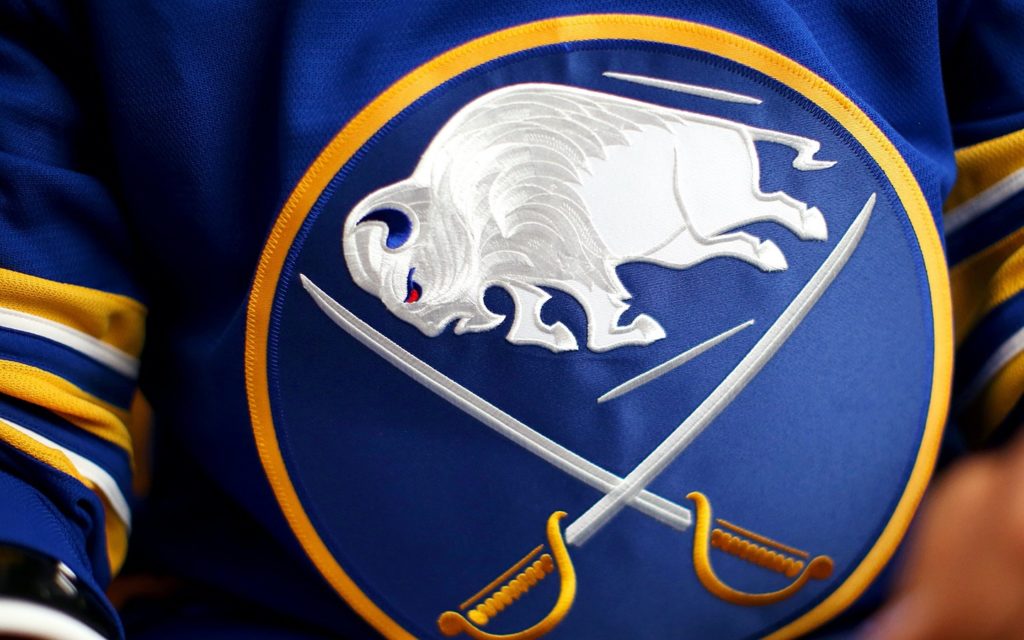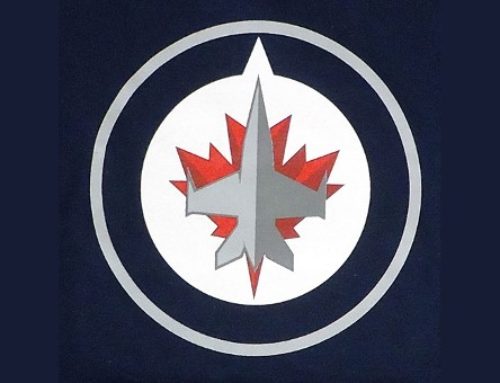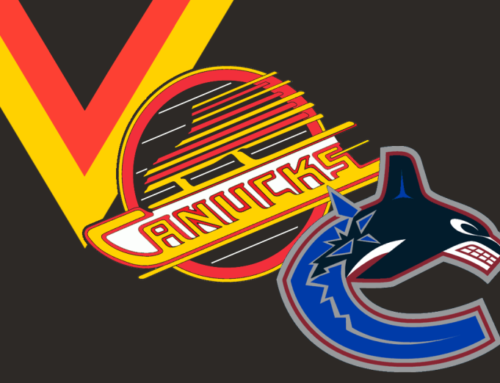November 31-in-31: Buffalo Sabres
Kevin Wong
2020-11-04

Photo courtesy of the Buffalo Sabres
Kevin Wong is the DobberProspects Buffalo Sabres writer and scout and has kept the entire Buffalo Sabres system up to date. Check out the team page here.
The 2020 NHL off-season has been shocking but potentially transformative for the floundering Buffalo Sabres. The organization’s actions have been bold, and although the end result has yet to be determined, the personnel changes have been enough to provide at least some sense of short-term optimism for the team’s supporters.
The Sabres finished 25th out of 31 teams in 2019-20 and lost six of their last seven games just before the termination of the regular season in March. They were abysmal across numerous stretches of the season. Substantial changes were necessary, especially with regards to the improvement of the team’s prospect pool and on-ice product.
Since March 2020, the Sabres have replaced their general manager, purged their front office, acquired one of this year’s top free agents only two years removed from his Hart Trophy season, traded for a former marquee player in Eric Staal, and drafted a 50-goal Ontario Hockey League sniper. This franchise has endured a decade of monumental challenges, including nine years without a playoff berth. Throughout that time, they have experimented with numerous different player lineups, the latest of which seems promising in theory but also requires a cautious sensibility based on past precedent. The organization has been stuck in a state of mediocrity. Fans have hoped desperately for the team’s fortunes to shift.
The changes began with the team’s decision to end its relationship with general manager Jason Botterill on June 16. The Sabres’ Vice President of Business Administration Kevyn Adams was simultaneously appointed to be his replacement.
Statement from Sabres Owners Terry and Kim Pegula. pic.twitter.com/np3SzkdDXq
— Sabres PR (@SabresPR) June 16, 2020
Botterill served as general manager for three years beginning on May 11, 2017. Among his most controversial moves was his decision in 2018 to trade Ryan O’Reilly to the St. Louis Blues. The very next season, O’Reilly won the Stanley Cup, the Frank J. Selke Trophy, and the Conn Smythe Trophy as the league’s playoff MVP. The organization has also experienced a certain degree of on-ice turmoil ranging from star Jack Eichel’s vocal displeasure at the team’s lack of success to the perceived absenteeism of the ownership group. ESPN’s Greg Wyshynski recently observed some of the team’s controversies of the past few years [https://www.espn.com/nhl/story/_/id/28643117/why-buffalo-sabres-nhl-biggest-disaster]. With ticket sales in decline and the product in a perpetual state of inadequacy, a major shakeup occurred in June 2020.
A barrage of other firings occurred on the same day Jason Botterill was released. Among those relieved of their duties: assistant general managers Randy Sexton and Steve Greeley, Rochester Americans coaches Chris Taylor, Gord Dineen and Toby Petersen, director of amateur scouting Ryan Jankowski, assistant amateur scouting director Jeff Crisp, and nearly all of the amateur scouting staff.
BUF has also released director of amateur scouting Ryan Jankowski and a good chunk of amateur staff. Just an ugly day.
— Elliotte Friedman (@FriedgeHNIC) June 16, 2020
New general manager Kevyn Adams quickly began to reshape the Sabres’ lineup. In September 2020, top-six forward Marcus Johansson was traded in exchange for Eric Staal. Johansson is slated to begin the second year of his current two-year, $4.5 million AAV contract, whereas Staal is on the final year of a deal averaging $3.25 million per season. In 2019-20, Johansson scored just nine goals and 30 points in 60 games; Staal scored 19 goals and 47 points in 66 games. If the past few seasons are indicative of these two players’ performances this upcoming year, the Sabres have made an astute offensive upgrade to their roster. Johansson was fourth among Sabres forwards in ice time per game in 2019-20, averaging 17:09. Many of those minutes will be allotted to Staal, who averaged 17:08 per game last season.
The club’s other major roster move of the off-season was their acquisition of highly-coveted winger Taylor Hall in October. His decision to sign with the perennial bottom-dwellers on a one-year, eight-million dollar deal was a complete surprise. However, he now has an opportunity to play alongside star center Jack Eichel as well as puck-moving defence prodigy Rasmus Dahlin. Additionally, Hall is familiar with the team’s current head coach, Ralph Krueger, who managed the Edmonton Oilers’ bench during the 2012-2013 NHL season.
Now that we've heard from Taylor Hall, sounds like his reasons for signing $8M, 1-year deal with Sabres are (in no particular order):
1. COVID market/wanting to see landscape
2. Playing under coach Ralph Krueger
3. Playing with Jack Eichel
4. Betting on himself
5. Sabres' future— Stephen Whyno (@SWhyno) October 12, 2020
We will expand further on the Sabres’ off-season acquisitions and player departures towards the conclusion of this article.
NHL Draft
A few days prior to the start of free agency, the 2020 NHL Draft took place. The Sabres have not historically been very successful at the NHL draft over the past half-decade. The only Sabres draftees to represent the NHL club since 2015, in descending order of games played, have been Jack Eichel, Rasmus Dahlin, Casey Mittelstadt, Alexander Nylander, Rasmus Asplund, Brendan Guhle, Will Borgen, and Brandon Hagel. The Sabres have had 39 draft choices between 2015 and 2020. This fruitless search for talent has been a significant factor in their perennial struggle to become competitive in the NHL. Their lack of on-ice success has not led to a successful restocking of talent via the draft. The majority of the scouting staff were terminated this past June as a result.
Entering the 2020 NHL Draft, the Buffalo Sabres possessed just five draft picks.
In the recent past, the Sabres have opted for such skilled playmakers as Casey Mittelstadt and rugged, two-way players along the lines of Dylan Cozens. This year, they targeted natural goal-scoring wingers with their first picks and two-way speed with their later ones. The result was a very forward-heavy group. Based on the Sabres’ deficiencies in their development system right now, it makes absolute sense that they would focus on adding more forwards to their player group. The organization requires more high-end skill in its farm system. They attempted to address that in the 2020 Draft.
With their five picks in the seven-round draft, the Sabres were able to add quickness and finishing ability to their forward depth chart. Top scoring ace Jack Quinn headlined the team’s selections. The pick was not without a degree of debate about whether Quinn should have been chosen instead of his Ottawa 67s teammate, Marco Rossi. The latter was often ranked ahead of Quinn among scouts. Our own Cam Robinson ranked Rossi #3 and Quinn #12 among 2020 draft-eligible players in his Dobber Prospects final draft rankings in June. Once Quinn was chosen eighth overall by Buffalo, the Minnesota Wild responded by selecting Rossi ninth overall. This debate will surely continue for the foreseeable future. Quinn scored 52 goals in the Ontario Hockey League this past season and was commonly viewed as one of the best goal scorers available this year. The Sabres lack elite goal-scoring talent in their prospect pool. Last season, they finished in the bottom-third in the Goals For Per Game category among NHL teams.
The Sabres selected another scorer, John-Jason (J.J.) Peterka, with their 34th-overall selection. Their acquisition of Peterka could be seen as a minor victory, as he was often regarded as a potential first-round selection among scouts. He was, for example, ranked 27th in Cam Robinson’s June rankings. Peterka offers net-front offense and line-driving ability with his work in the corners. He provides relentless, aggressive forechecking and can slide up and down his team’s lineup due to his versatile skill set and approach.
Fifth-round pick Matteo Costantini is a dynamic, speedy scorer who has torched the Junior A leagues in recent months. The team’s only non-forward pick, overager Albert Lyckasen, is a mobile, two-way defenceman whose improvements on the offensive side the puck over the past year prompted the Sabres’ consideration in the seventh round. The organization used their final pick, 215th overall, to select Czech center Jakub Konecny, who adds speed and hustle on the backcheck.
We can observe these players on an individual basis with shift-highlight footage. Our Eight-Minute Insights series gives us a look at some of these players’ tendencies and their unique styles of play.
Round One, Eighth Overall – Jack Quinn, RW
Jack Quinn was the Sabres’ grand prize of the 2020 Draft. The selection, however, generated a few expressions of discontent from fans of the team. With the more-complete and much more prolific, albeit smaller forward Marco Rossi still on the draft board, the organization made a bold choice to choose Quinn. Among the differences, there is a reasonable height discrepancy between the two: Quinn stands at 6’1”, 179 lbs, while Rossi is 5’9”, 189 lbs. Rossi, on the other hand, is more of a two-way player who fights for space in the corners and in the crease, whereas Quinn is more of a traditional sniper who thrives in the soft areas between the offensive faceoff circles. The Sabres possess playmakers who can create an environment in which Quinn can thrive.
We have footage of Quinn’s performance against the Niagara IceDogs on March 10, 2020. He wears #22 in the footage. We can gauge his style of play here.
He can transition the puck up the ice quickly as well as work with his teammates to attack the opposition with numbers. He is also a skilled stick handler and a very dangerous threat for opposing goaltenders in close quarters. However, while Quinn provides a determined effort on the backcheck and kills penalties at the OHL level, he does not play a refined defensive game. There remain some positional lapses that require further correction. In spite of his fairly simple offensive style, he delivers goals and is a consistent offensive threat at the OHL level. He scored 52 goals and 89 points in 62 games in 2019-20. He is a finisher above all else. The incomplete nature of this player’s game comes with some degree of risk, but there is no doubt that the most celebrated characteristics of his game are of a high-end quality.
The following is a highlight package of his goals last season in the OHL, courtesy of the Ontario Hockey League’s YouTube channel.
Quinn has been invited to Team Canada’s 2021 World Junior Selection Camp along with fellow Buffalo Sabres prospect Dylan Cozens.
Round Two, 34th Overall – John-Jason Peterka, LW
J.J. Peterka could have been a first-round pick. Most of the popular rankings placed him in the latter-third of the opening round, so the Sabres were very pleased to be able to choose him on the second day of the draft.
Kevyn Adams tried trading back into the first round to draft JJ Peterka. Didn’t work out, but the Sabres still got their guy.
Adams mentioned he watched many of Peterka’s games from last season. Lost sleep thinking about how he could draft the winger.
— Lance Lysowski (@LLysowski) October 8, 2020
Peterka is a gritty, hard-nosed, forechecking winger who plays a strong game along the boards and works relentlessly to bump the opposition off the puck. As of now, he is 5’11”, 192 lbs. Along with his ability to convert opportunities near the crease, his tenacious forechecking style makes him a dangerous scoring threat in the lower half of the offensive zone. He pushes the pace of play and seeks to pressure the opposing puck carrier so that he may retrieve the puck and create chances from deep in the o-zone. He often distributes it to teammates from the o-zone corners as well as from below the goal line.
His first two steps are quick enough that he can begin his team’s transition up the ice if the puck lands within his immediate vicinity. He also plays an aggressive defensive game in his own zone.
With regards to his projection into an NHL lineup, he may be able to adapt to a bottom-six role if he does not reach his potential as an offensive player. His impressive forechecking skill set is among his primary strengths. His chances of becoming an NHL player are perhaps greater than those of other, more skilled, but similarly-ranked prospects because of the completeness of his skill set. At his very best, he may be able to find a place in the top half of an NHL forward chart, but he may also be a serviceable checker if this does not pan out.
At the 2020 World Juniors with Team Germany, he scored four goals and six points in seven games. One of those performances is on display in our video package below. He scored twice against Team USA in this match.
Round Five, 131st Overall – Matteo Costantini, C
After 130 other selections were made, the Buffalo Sabres were finally able to make their third pick of the 2020 draft class. They selected Matteo Costantini, who last season played for the Buffalo Jr. Sabres of the Ontario Junior A Hockey League. He scored 36 goals and 68 points in 50 games with his team and was consequently named the league’s top prospect. He currently plays for the BCHL’s Penticton Vees and is the team’s first-line center.
The Sabres added another offensive player with this selection. With such few picks in this year’s draft, they prioritized offensive upside with their early and mid-round selections. Costantini, 6’0” and 174 lbs, offers speed and a heavy shot, as indicated by his offensive output both this year and last in Junior A.
Pretty good Wednesday for Matteo Costantini. Hours after being drafted by the Sabres, he put the cherry on top of Penticton's 4-0 win over Vernon. pic.twitter.com/CFzYHeHbVr
— Kris Baker (@SabresProspects) October 11, 2020
He is currently fifth among scorers in the BCHL with four goals and 15 points in 10 games this season. Next season, he is slated to play for the University of North Dakota.
Buffalo takes a player from their own backyard in Matteo Costantini. OJHL forward who combines speed and goal scoring ability. Has started off very well in the BCHL with Penticton this year and has a commitment to North Dakota.
— OHL Prospects (@BrockOtten) October 7, 2020
Round Seven, 193rd Overall – Albert Lyckasen, D
After being undrafted as an 18-year-old in 2019, 5’11” Swedish defenceman Albert Lyckasen was selected as an overager in the seventh round of the 2020 draft. One reason he might have been passed over in 2019 was his lack of offensive output. He was a mobile, but somewhat defensive presence on the blue line.
This season, he more than doubled his offensive totals with his SuperElit team, scoring 14 goals and 36 points in 43 games with Linkoping HC J20. He became a more assertive puck carrier and was able to consistently generate offense, whereas in the past he had been less prominent in that regard. Last season, he quarterbacked his junior team’s powerplay and was relied upon to generate chances from the back end.
His best attribute is still his ability to contain opposing rush attackers to the outside. He plays a measured defensive game and uses his quickness to control the distance between himself and the opponent, as shown in our footage below. He relies heavily on his maneuverability as a defenceman.
One might, thus, consider him to be a mobile, two-way defenceman based on his style of play. He is perhaps a long-shot to play in the NHL, but at this stage of the draft, some players are simply less developed than their peers. Player development is crucial, and Lyckasen certainly demonstrated enough of an improvement over the previous season to be selected with the late pick. This season, he was slated to play for HC Vita Hasten of Sweden’s Allsvenskan. He has instead been loaned to that country’s third-tier league, the HockeyEttan.
Our footage is of his performance in the 2019 U18 World Championship Gold Medal match against Team Russia against his draft class peers. During the match, he was paired with top prospect Philip Broberg, the latter of whom was subsequently selected by the Edmonton Oilers in the 2019 Draft.
Round Seven, 216th Overall – Jakub Konecny, C
Jakub Konecny was the Sabres’ final selection of the 2020 NHL Draft. He is, by and large, a defensive-minded forward. He plays a simple, speedy, north-south style. His primary objectives are to transition the puck out of his own zone and to keep his team from being hemmed in their defensive end.
At 5’10”, 157 lbs, he is an undersized skater. He is light on his skates. He compensates for this with his skating ability and determined defensive effort.
Offensively, he does not offer much in terms of creativity or vision. He does not generate much offense with the puck on his stick, and although he is able to move swiftly up the ice with the puck, he is not particularly effective off the rush. He has been an effective scorer in the Czech junior leagues, but his offensive ability might not stand out at higher levels.
He utilizes his speed well coming back into his own zone and closes his distance towards the opponent quickly. With aggressive gap control, he supports his team’s possession of the puck. He also anticipates well enough to pressure the opponent and disrupt the opposition’s attack, using his body as an obstacle. He often hustles through the neutral zone on the backcheck as the team’s third player back, and he engages along the boards frequently despite his lack of strength. His style of play resembles that of a bottom-six, defensive checker. With their final pick, the Sabres selected a player with some defensive upside but perhaps limited offense.
Below is his performance against Team Canada at the 2019 Hlinka-Gretzky Cup.
The Sabres had very few opportunities to fortify their prospect pool this year. With only five picks, two of which were seventh-round choices, the 2020 Draft might not have been the tide-turning event that the draft is required to be for this organization. The team has, however, been busy upgrading their on-ice product in hopes of achieving some semblance of short-term success.
The team’s scarcity of draft picks in 2020 was partly the result of sacrificing their third and sixth-round picks, among other assets, in exchange for Jeff Skinner from the Carolina Hurricanes in 2018. In 2019, the team relinquished one of their 2021 second round picks as well as a third round pick to acquire Colin Miller and Jimmy Vesey, the latter of which departed this October as a free agent. As a result, the Sabres currently possess only five picks in the 2021 NHL Draft. The team’s short-term objectives have, in recent years, come at the expense of their long-term vision.
Jack Eichel turned 24 years old last week on October 28 and is in the midst of his prime years. There is, thus, significant pressure for the team to succeed now. With no high-end prospects immediately available to help the Sabres, the organization decided during this off-season to acquire scoring support in the form of numerous veteran stars. The Sabres have no window to wait for their young players to develop. However, they must also avoid shedding too many of their future assets in their quest for immediate results, or else they may remain in this middling territory for years to come. The future is built through the draft. The Sabres have not done this.
Off-Season Moves
The Buffalo Sabres’ acquisition of Taylor Hall can immediately be considered a colossal victory for the organization. In spite of their lack of success and with so much controversy surrounding the franchise, they were able to attract a highly-coveted free agent in their most desperate hour.
Whether Hall will have the impact of an eight-million dollar player remains to be seen. He scored 16 goals and 52 points in 65 games this year between his time with the New Jersey Devils and Arizona Coyotes. During the 2018-2019 season, he suffered a knee injury that kept him out of the lineup for all but 33 games. His impact with the Coyotes in 2019-2020 was underwhelming, and the much-anticipated combination of him with Phil Kessel in Arizona was a letdown. In spite of his moderate statistical decline, however, Hall was one of the most high-profile signings of the 2020 off-season. In the weeks leading up to his eventual deal with the Sabres, he discussed wanting to sign with a competitive organization and suggested that he would accept a shorter contract to accomplish his personal hockey objective of winning. There was some wishful thinking among observers that Hall would join a stacked lineup such as that of the Colorado Avalanche. Thus, when it was announced that he had signed with Buffalo, the hockey world was taken aback.
Mini-Headlines tonight with @reporterchris and @DavidAmber. OEL/Hall/Goalies Enjoy! https://t.co/OzdtqrQqzP pic.twitter.com/uAVdO3o7fX
— Elliotte Friedman (@FriedgeHNIC) October 4, 2020
Hall will be 29 years old when he debuts with the Sabres. He scored two goals, six points in nine playoff games with Arizona, although he recorded no points in six of those nine games. He will now be surrounded by and playing alongside top-tier offensive players the likes of which he has not played with since the trade from Edmonton in 2016. The expectations are high for him to succeed on Eichel’s wing. Both possess great speed, shooting ability and one-on-one skill. The pair will furthermore be supported by puck-moving phenom Rasmus Dahlin.
Coach Ralph Krueger on the possibility of Jack Eichel and Taylor Hall on the same line…
🔥🔥🔥 pic.twitter.com/TlLPEAocEa
— Buffalo Sabres (@BuffaloSabres) October 12, 2020
The Sabres now also possess a secondary scoring unit featuring Eric Staal and Jeff Skinner, both of whom are familiar with one another from their six seasons together in Carolina.
Scorers Victor Olofsson and Sam Reinhart were ranked second and third, respectively, among Sabres forwards in ice time last season. They were third and second, respectively, in point scoring on the team and are expected to provide a significant chunk of the team’s offensive production this upcoming season as well.
Incoming: Taylor Hall, Eric Staal, Cody Eakin, Tobias Rieder, Matt Irwin, Brandon Davidson, Steven Fogarty, Brandon Biro, Dawson DiPietro
Outgoing: Marcus Johansson, Dominik Kahun, Vladimir Sobotka, Jimmy Vesey, Matt Hunwick, Michael Frolik, Marco Scandella, Johan Larsson, John Gilmour, Scott Wilson, Dalton Smith, Andrew Hammond, Brandon Hickey, Matthew Spencer, Remi Elie, Taylor Leier, Wayne Simmonds
These new acquisitions have significantly lessened the likelihood that an incomplete, offense-oriented prospect such as Casey Mittelstadt can establish any roots with the Sabres next season. Three years removed from being selected eighth overall by Buffalo, Mittelstadt scored just nine points in 31 games last season in the NHL. He spent the second half of the campaign in the AHL. He continues to struggle with the responsibilities of forechecking, even at the AHL level. His passive play has consistently been an obstacle.
Former first-round selection Tage Thompson, acquired in the Ryan O’Reilly deal, has also struggled thus far to adapt to the NHL despite seeming comfortable in the AHL. He missed most of the 2019-2020 season with a shoulder injury. He underwent shoulder surgery in January. In 2018-2019, he recorded seven goals, 12 points in 65 games with the Sabres.
Both players seem more suited to play with the Rochester Americans in 2020-2021, even though Thompson recently signed a new, three-year deal with a $1.4 million AAV cap hit. The team will likely experiment with him as a member of their bottom-six forward group before determining if he should return to the AHL.
The Sabres’ prospect pool does not appear to feature any NHL-ready impact players based on the performance of these players last year. The organization’s new veteran signings will, thus, provide the team’s few high-end prospects with additional time to develop.
During the off-season, the Sabres re-signed several of their pending free agents, including Victor Olofsson, Sam Reinhart, Tage Thompson, Curtis Lazar, Linus Ullmark, Jonas Johansson, Brandon Montour, Zemgus Girgensons, Andrew Oglevie, and Casey Nelson.
Some of the organization’s AHL players from last year remain unsigned, although one might expect a few of the team’s international prospects to assume those roles in the upcoming campaign. Current Ilves forward Arttu Ruotsalainen is one such example. 23-year-old Ruotsalainen currently leads the entire Finnish Liiga in scoring this season with nine goals and 15 points in 12 games. The most notable Rochester Americans player slated not to rejoin the team in 2020-2021 is KHL-bound, offensive defenceman Lawrence Pilut. The Sabres issued a qualifying offer to him in order to retain his RFA rights.
As the start date of the 2020-2021 season has yet to be determined, there remains some time for the Buffalo Sabres to add pieces to their existing group as well as address the needs of the AHL Rochester Americans.
The franchise’s work this off-season has been audacious at a time when results need to be immediate. The organization has reached a breaking point. The patience of those involved with the team has worn thin. To improve the prospect pool while also icing a successful lineup will surely be a sizable challenge for any general manager, but for Kevyn Adams it is now the expectation. For a team with an aging star, a nine-year non-playoff streak and a lack of high-level prospects, there need to be bold actions for anything to change. The cycle of failure must be broken.
Kevin is @CambieKev on Twitter. He is a video editor, scout and hockey historian who writes for Canucks Army, Nucks Misconduct, Pass It To Bulis and Last Word on Sports among other publications. He is the creator of The Lost Shifts.






